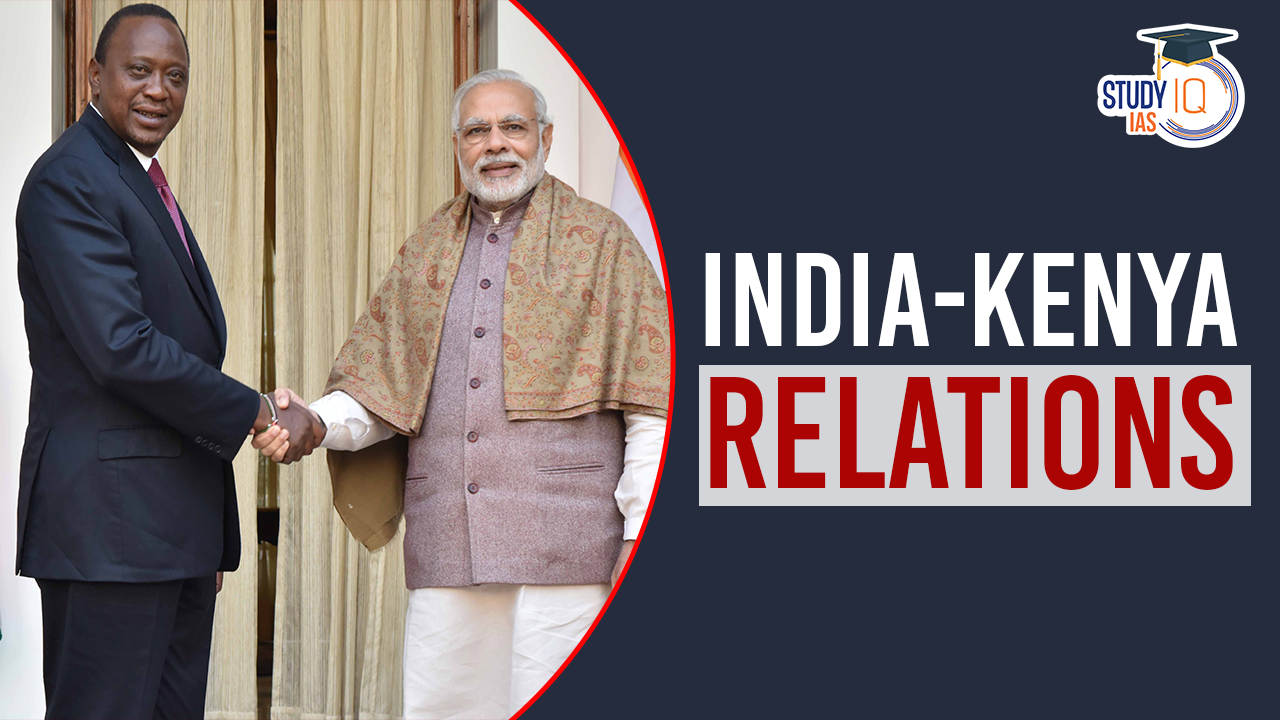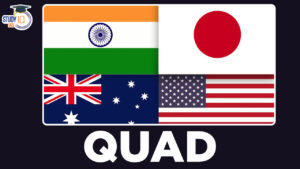Context: India announced a $250 million line of credit to Kenya for the modernisation of its agricultural sector.
About India-Kenya Relationship
Economic Relationship
- Bilateral Trade Agreement: Since 1981, the nations have enjoyed Most Favoured Nation status, boosting bilateral trade to $4.235 billion in 2014-15, solidifying India as Kenya’s largest trading partner.
- Investment Hub: Over 60 major Indian companies thrive in Kenya, contributing to various sectors, including manufacturing, real estate, pharmaceuticals, telecommunications, IT, banking, and agro-based industries.
- Development Cooperation: India provides vital assistance through agreements like the $100 million Line of Credit for Agricultural Mechanization, supporting Kenya’s agricultural development.
We’re now on WhatsApp. Click to Join
A Vibrant Indian Diaspora
- Approximately 80,000 people of Indian origin and around 20,000 Indian citizens have enriched Kenya’s cultural landscape and contributed significantly to diverse fields.
- In 2017, the Kenyan government acknowledged people of Indian descent as the 44th tribe within the nation.
Extending a Helping Hand
- Vaccine Maitri Initiative: Recognizing the pandemic’s challenges, India supplied Kenya with 1.12 million doses of the AstraZeneca vaccine, including 1.02 million through COVAX and 100,000 as a direct donation.
Recent Developments
- Enhanced Collaboration: India and Kenya have signed five Memoranda of Understanding to deepen cooperation in vital areas like health, ICT, energy, SMEs, and agriculture.
- Market Access: India’s decision to grant access to Kenya’s avocados offers a significant opportunity for Kenyan farmers and bolsters trade ties.
- Agricultural Support: India’s commitment to financing agricultural mechanisation aligns with Kenya’s development goals and promotes long-term agricultural growth.
- Maritime and Security Collaboration: The Joint Vision Statement on Maritime Cooperation strengthens regional security by addressing shared challenges, including combating terrorism.
- Technology and Skills Transfer: India’s initiative to facilitate the transfer of skills and technology in crucial sectors like health, education, ICT, and digital governance will empower Kenya’s capabilities and contribute to its overall development.
| What is a Line of Credit? |
Line of Credit by the Government of India
Role of Exim Bank in Line of Credit
Benefits of Line of Credit
|
Difference Between a Line of Credit and a Loan
| Feature | Line of Credit | Loan |
| Definition | Pre-approved borrowing limit accessed and repaid as needed | Lump sum of money borrowed and repaid with interest over a fixed period |
| Type of credit | Revolving | Non-revolving |
| Access to funds | Flexible | One-time |
| Interest | Accrues on the used amount | Accrues on the entire amount borrowed |
| Repayment schedule | As needed within the limit | Fixed monthly installments |
| Collateral | May or may not be required | Typically required |
| Examples | Credit cards, home equity lines of credit, business lines of credit | Mortgages, car loans, personal loans |


 Dalai Lama Confirms He will have a Succe...
Dalai Lama Confirms He will have a Succe...
 Transforming Remittances Landscape in In...
Transforming Remittances Landscape in In...
 QUAD Countries: Members, Objectives, Imp...
QUAD Countries: Members, Objectives, Imp...





















